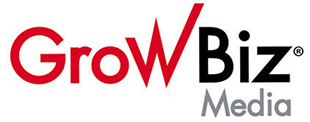Managing employees across multiple time zones was a great challenge—this is no longer the case. The pandemic pushed many out of their typical workspaces and forced them to work remotely. Today, despite much of daily life returning to the norm, many things have remained the same.
A recent study has shown that 45% of employees are still working from home five or more days each week. This may seem like businesses aren’t making progress with their workforce, but remote employment has proved to be beneficial.
Organizations are now able to expand talent pools, operate 24/7, and complete deliverables at faster rates. These can be accomplished because workforces are no longer present in one specific geographic area; they’re extended to time zones across the United States and the world.
If managing employees in different time zones is a new concept to you, there are a few things you must keep in mind.
Communicate Boundaries
When working with colleagues in different time zones, tensions could run high if you don’t explicitly explain boundaries with your staff. For example, if your business is based in New York City, and you have employees in Melbourne, Australia, your domestic staff needs to understand that correspondence won’t be quick. Between the two cities, there is a 14-hour time difference—if someone has a question when they get to the office at 8:00 a.m. EST, they may not get a response until the next day.
Furthermore, as an employer or manager, you shouldn’t expect employees to jump into meetings between 10:00 p.m. and 7:00 a.m. (or other late/early hours). The time zone your employees work in must be respected.
When global employees feel as though their schedule is respected, they will feel happier, less stressed, and have an easier time communicating.
Encourage Flexible Work Hours
Flexible work hours, especially for your global employees, are a necessity if you want to avoid burnout amongst your workforce. Although this may imply that your employees will work different schedules, it doesn’t mean that communication will break down.
If schedules are set at the time of onboarding, it will be easier for you to coordinate schedule overlaps and project deadlines. If you do so, all employees will know the hours they can get fast responses to pressing issues or when they should send an email to ask less important questions that can wait.
It is also important when setting deadlines to set them in all of the time zones your employees work in. This will help to deter any confusion that may arise.
Use Asynchronous Communication Tools
Project management and communication tools, such as Teams, Asana, Wrike, and Slack, are essential resources for managing employees across the globe.
Relying on these tools means your employees will work in the same systems and can access them at all hours of the day. If you assign your copywriter a 14-email campaign, three graphics from your designer, and ten posts from your social media manager, where they’re located doesn’t matter. All three employees can go into the platform you work in, see what they need to complete, and get that work done at appropriate hours within their time zone.
Management tools also give you the ability to keep track of global employees’ progress on each project, considering you and the employees won’t always be available to each other.
Show Your Appreciation
It goes without saying that whether your employee is two desks away from you or halfway around the world, all employees need to feel appreciated. Not only is this essential for morale, but it also has great business ramifications.
If your employees don’t feel appreciated, they will begin to search for new opportunities and leave. Retention, especially with a global workforce, should be one of the most important aspects of your business.
One prediction by Gartner shows that 75% of companies employing diverse decision-making teams can expect to outperform their business objectives in 2022.
If your global employees don’t feel wanted or appreciated at your organization, the diversity of your organization will leave with them.
You should also make an effort to host virtual team events during hours that are suitable for global employees due to the fact that they aren’t in close contact with much of your workforce; making them feel part of the team could be incredibly beneficial.
Debra Lopez is the SVP Employee Experience, for VensureHR.
Time zones stock image by Moremar/Shutterstock



